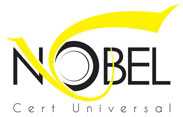There is a wide variety of products available to consumers in the global marketplace. Products routinely travel across borders in order to meet increasing consumer demand as suppliers seek to lower cost and expand markets. While many products are safe and fit for intended use, statistics show that, each year, millions of people suffer injuries or illness, or die from unsafe products.
While regulations and standards exist in many countries, and industries do all they can to make products safe and fit for intended use, problems related to design flaws, manufacturing defects, inadequate warnings or instructions still result in unsafe products entering the marketplace. In those instances, it is critical that corrective actions, which include recall, are carried out quickly and effectively. Although many countries have regulatory requirements and guidance for suppliers to conduct product recalls, many do not. Even in countries with well-developed requirements, recalls may be ineffective. As a result, there are inconsistencies in the approaches to product recall and other corrective actions, and products that pose health or safety risks to consumers remain in the marketplace.
This International Standard is designed to provide practical guidance in determining whether corrective actions, including recalls, need to be carried out by the supplier of consumer products. It also provides best practices for conducting a product recall if it is necessary. The guidance provides information and tools that suppliers of all sizes can use to develop a documented and validated product recall programme that will help them implement timely and cost-effective recalls, minimize legal and reputation risks, and reduce health or safety risks to consumers.
Although this International Standard is intended for suppliers, it might also help government agencies in developing or improving product recall policies and guidelines.
Broad application of this International Standard will lead to a more consistent approach to removing unsafe products from the global marketplace, to improving coordination between government and consumer products organizations in different countries, and to increasing consumer confidence in the safety of products available in the marketplace.
This International Standard has been developed in parallel with ISO 10377, which focuses on product safety. The relationship between this International Standard and ISO 10377 is illustrated in Figure 1.


